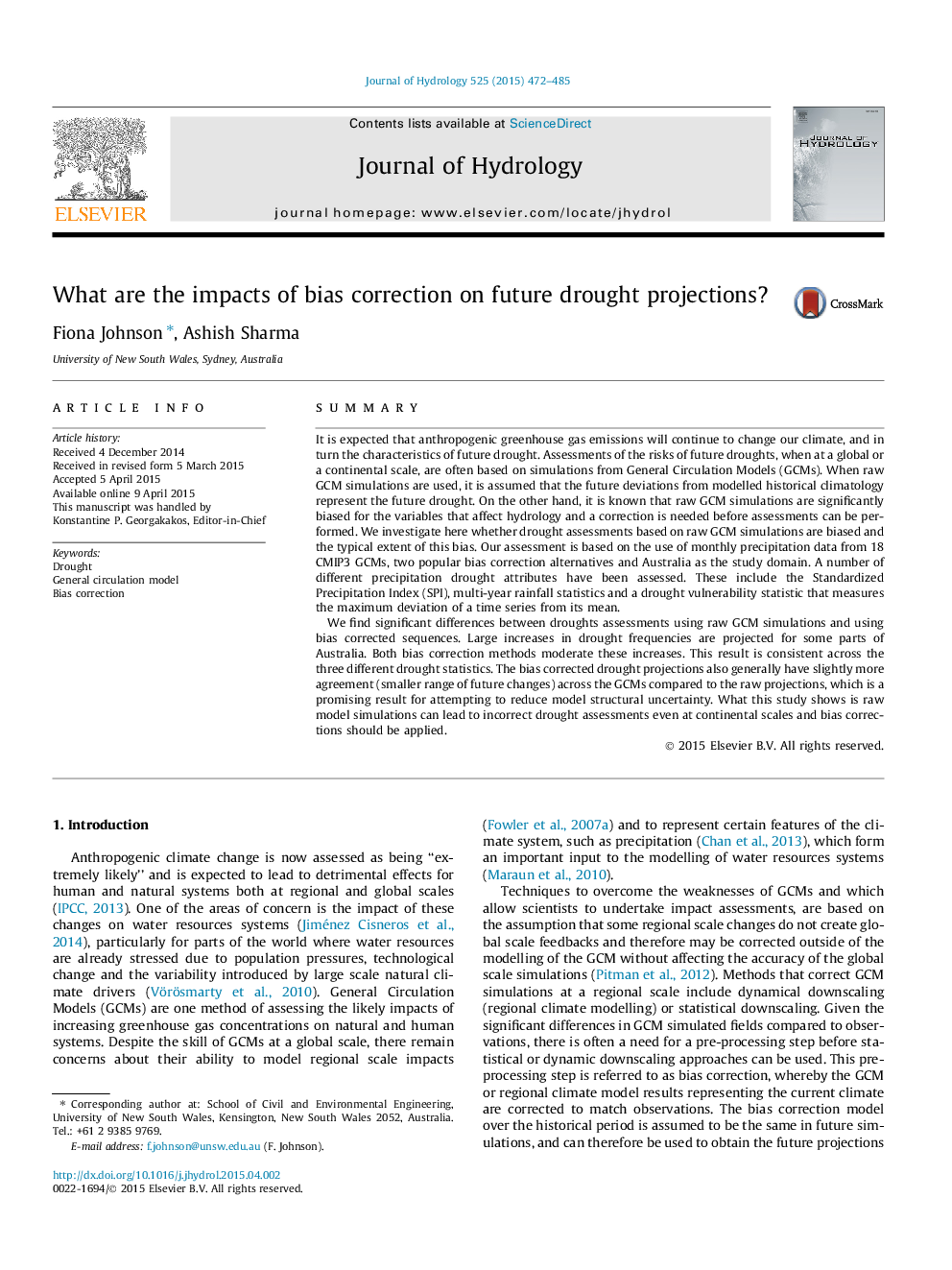| کد مقاله | کد نشریه | سال انتشار | مقاله انگلیسی | نسخه تمام متن |
|---|---|---|---|---|
| 6410634 | 1629925 | 2015 | 14 صفحه PDF | دانلود رایگان |
- Raw GCM simulations of changes in future drought frequency are biased.
- Bias correction leads to smaller increases in drought frequency over Australia.
- Bias correction slightly increases consistency in model projections.
SummaryIt is expected that anthropogenic greenhouse gas emissions will continue to change our climate, and in turn the characteristics of future drought. Assessments of the risks of future droughts, when at a global or a continental scale, are often based on simulations from General Circulation Models (GCMs). When raw GCM simulations are used, it is assumed that the future deviations from modelled historical climatology represent the future drought. On the other hand, it is known that raw GCM simulations are significantly biased for the variables that affect hydrology and a correction is needed before assessments can be performed. We investigate here whether drought assessments based on raw GCM simulations are biased and the typical extent of this bias. Our assessment is based on the use of monthly precipitation data from 18 CMIP3 GCMs, two popular bias correction alternatives and Australia as the study domain. A number of different precipitation drought attributes have been assessed. These include the Standardized Precipitation Index (SPI), multi-year rainfall statistics and a drought vulnerability statistic that measures the maximum deviation of a time series from its mean.We find significant differences between droughts assessments using raw GCM simulations and using bias corrected sequences. Large increases in drought frequencies are projected for some parts of Australia. Both bias correction methods moderate these increases. This result is consistent across the three different drought statistics. The bias corrected drought projections also generally have slightly more agreement (smaller range of future changes) across the GCMs compared to the raw projections, which is a promising result for attempting to reduce model structural uncertainty. What this study shows is raw model simulations can lead to incorrect drought assessments even at continental scales and bias corrections should be applied.
Journal: Journal of Hydrology - Volume 525, June 2015, Pages 472-485
